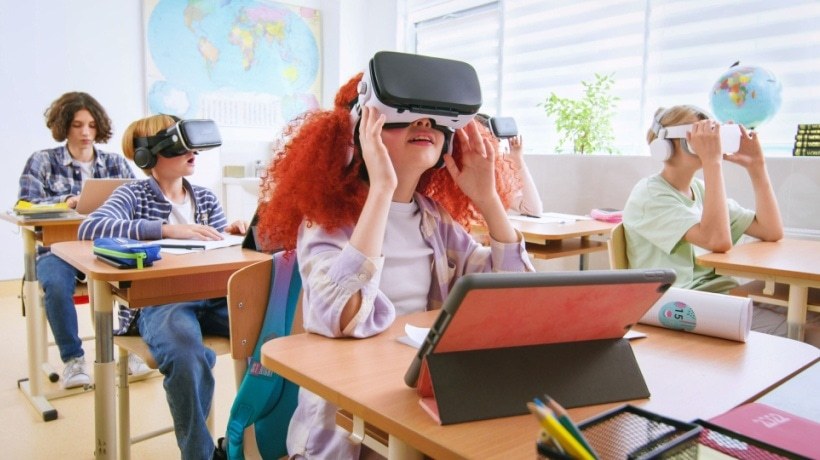Engage Learners With Gamification And Immersive Technologies
Across industries, teams often complete courses without truly changing how they act in real situations, which leads to lost productivity and missed outcomes despite significant learning investment. The gap isn't content volume. It's context and experience, and that is exactly where gamification and immersive tech shine by making learning feel purposeful and practice-driven. Together, they shift learning from a one-time event to a living system of challenges, feedback, reflection, and reinforcement.
Why Traditional Engagement Falls Short
Learning built for completion rather than transformation rarely sticks, especially when it lives in abstract slides or generic modules with little connection to day-to-day decisions. Without practice, reflection, and timely feedback, initial enthusiasm fades and skills decay, leaving teams disengaged and leaders frustrated. Engagement isn't a cosmetic layer, it's the mechanism that turns knowledge into confident action under pressure.
The Foundations Of Meaningful Engagement
Three principles drive engagement that lasts: realism, relevance, and reinforcement, each grounded in how people solve problems at work. Realism comes from scenarios that mirror actual stakes and emotions, relevance comes from role-specific pathways, and reinforcement comes from spaced practice and prompts in the flow of work. When these align, learners pay attention, try, fail safely, and improve fast where performance matters most.
What Gamification Really Adds
Gamification isn't about gimmicks; it's about designing for motivation with clear goals, visible progress, timely feedback, and social energy that propels sustained practice. Meaningful mechanics such as levels tied to real competencies, points tied to quality actions, and badges linked to observable behaviors that help learners focus on doing the right things repeatedly. Leaderboards and team challenges work best when they reward mastery and reflection, not just speed or clicks.
Immersive Tech: From Knowing To Doing
Immersive experiences such as scenario-based simulations, interactive video, VR, and branching dialogues let learners practice nuanced decisions with immediate, contextual feedback. This safe, high-fidelity practice builds judgment, empathy, and confidence, especially for complex conversations, safety-critical tasks, and customer situations. The closer the simulation feels to the real world, the faster behaviors transfer back to the job.
The Perfect Pair: How They Reinforce Each Other
When gamification frames the journey and immersive tech delivers the moments that matter, engagement becomes both emotional and practical. Gamified structures set goals, unlock paths, and reward reflection, while immersive modules create rich decision points where learners try, observe consequences, and adjust. This loop—set aim, practice, get feedback, earn recognition, repeat—turns learning into progress that teams can see and leaders can measure.
Design Principles That Work
- Start with real scenarios: Design challenges that mirror everyday friction points like negotiation, feedback, safety protocols, or cross-functional handoffs.
- Make progress visible: Use levels and milestones that map to competencies, not just content completion, so learners sense meaningful growth.
- Reward behaviors, not clicks: Tie points to actions like trying alternative strategies, revisiting feedback, or coaching a peer.
- Build in reflection: Prompt short, guided reflections after each scenario to deepen judgment and readiness for the next attempt.
- Keep it role-specific: Offer variants of the same scenario for first-time managers, ICs, or senior leaders to keep relevance high.
- Space the practice: Use nudges over weeks to encourage retrying scenarios, applying tips, and sharing takeaways with peers.
Blended Journeys People Actually Finish
A strong journey might begin with a micro-module that sets the context and goal, followed by an interactive scenario with branching outcomes and a quick debrief. Next, a live huddle or peer circle explores choices, trade-offs, and better approaches, and a short challenge invites learners to apply a tactic in a real conversation. The cycle repeats with new scenarios, escalating complexity, and recognition for demonstrated behaviors on the job.
Measuring What Truly Matters
Completion and satisfaction scores are helpful but shallow; what matters are behavior shifts and operational outcomes tied to the scenarios being practiced. Look for increases in quality actions like constructive feedback delivered, first-time fix rates, safety adherence, or CSAT, supported by analytics from scenario performance and post-module reflections. When conversations improve and decisions get fairer and faster, engagement has done its real job.
Case Study: Transforming Learning Into Action For A Hospitality Chain
A leading bank had high onboarding completion rates, but new employees struggled in real situations. Front-line staff hesitated with customer queries, compliance errors occurred under pressure, and digital tools were underused. We created a gamified, immersive path linking levels to real competencies. Points rewarded reflection and retrying tough scenarios, and badges were earned only after peer or supervisor validation. Short simulations covered customer interactions, account opening, and compliance checks, with instant feedback and job aids. Two weekly micro-practices, quick supervisor huddles, and spaced nudges maintained momentum. Within 12 weeks, customer satisfaction, compliance adherence, and employee confidence all improved.
Now, let's connect these ideas to practice and explore some actionable ways to implement them effectively.
Practical Ways To Start Now
- Pick three pivotal moments: Identify scenarios where better decisions would unlock outsized value and build immersive challenges around them.
- Align mechanics to impact: Define the behaviors to reward and design points and badges that nudge those actions consistently.
- Create manager circles: Use peer groups to normalize sharing wins, misses, and tactics that worked, reinforcing a culture of growth.
- Bring leaders into the loop: Short leader signals, videos, or notes that model good choices, set tone, and reinforce desired behaviors.
- Offer job aids in the flow: Provide quick checklists, prompts, or templates linked from the same learning path so practice bridges to real work.
Conclusion
Gamification and immersive technologies belong together because motivation needs meaningful practice, and practice needs visible progress to sustain momentum over time. Organizations that bring them together see engagement as more than attention, they see it as better conversations, safer actions, and clearer decisions week after week.
At Tesseract Learning, we believe in turning knowledge into performance through immersive strategies that go beyond the obvious. To explore next-level gamification techniques, contact us.










